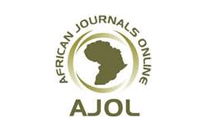Mansoura Veterinary Medical Journal
Document Type
Original Article
Keywords
Cryptosporidium, duck, pigeon, Egypt.
Abstract
Background: Cryptosporidiosis is a zoonotic parasitic disease that infects a wide range of hosts, including birds. Cryptosporidium infections vary across avian species and cause considerable economic losses. Data on cryptosporidiosis in ducks and pigeons are scarce.
Objectives: The present study aimed to investigate Cryptosporidium infections in household ducks and pigeons collected from live bird markets in two Nile Delta governorates (Dakahlia and Gharbia) in Egypt.
Methods: The intestinal contents of household ducks (n=109) and pigeons (n=57) collected from live bird markets in two Nile Delta governorates (Dakahlia and Gharbia) were tested using a sugar flotation test coupled with modified Ziehl Neelsen acid fast-fast (MZN) staining. Tracheal and bursal smears from some birds were also MZN tested. Thin (4-5 µm) histological sections of tissues containing Cryptosporidium oocysts were examined. Cryptosporidium oocysts were harvested from 10 intestinal content samples and PCR-tested for the Cryptosporidium oocyst wall protein (COWP) gene.
Results: Cryptosporidium oocysts were detected in the intestinal contents of 23 (21.1%) ducks and 15 (26.3%) pigeons. Oocysts were also detected in one out of 84 tracheal smears from ducks and in one out of 15 bursal smears from pigeons. However, all infections were subclinical, most likely because all birds examined were apparently healthy, and a few Cryptosporidium oocysts were detected in the tested samples. Variations in Cryptosporidium infections among districts, age groups, and seasons were not statistically significant. Morphometric analysis of the detected oocysts revealed infections with two Cryptosporidium species, small-sized Cryptosporidium meleagridis (4–5.5 × 4–5 µm), and large-sized Cryptosporidium baileyi (6–7 × 5–6 µm). The identity of these oocysts was not confirmed because PCR testing of the harvested oocysts failed, probably because the number of oocysts was lower than the PCR detection limits. A few histopathological changes were detected in Cryptosporidium oocyst-infected tissues. However, these changes were not specific and were not accompanied by exclusion tests for other pathogens.
Conclusions: Although the survey was small, high Cryptosporidium prevalence of Cryptosporidium was high among household ducks and pigeons in Egypt. Oocysts were preliminarily identified as C. meleagridis (the third most zoonotic Cryptosporidium species) and C. baileyi. However, accurate species genotype identification requires successful PCR sequencing assays. This underlines the importance of conducting large-scale molecular surveys of both ducks and pigeons. Samples from household and farmed birds, as well as healthy and clinically ill birds, should be included in these future surveys.
How to Cite This Article
Essam, Ahmed; Abbas, Ibrahim; Elmishmishy, Bassem; and Elwafa, Salah Abu
(2024)
"Cryptosporidium infection in ducks and pigeons collected from live bird markets in two Nile Delta governorates (Dakahlia and Gharbia), Egypt,"
Mansoura Veterinary Medical Journal: Vol. 25:
Iss.
4, Article 4.
DOI: https://doi.org/10.35943/2682-2512.1247
Receive Date
Jun 18, 2024
Accept Date
Jul 20, 2024
Publication Date
2024






